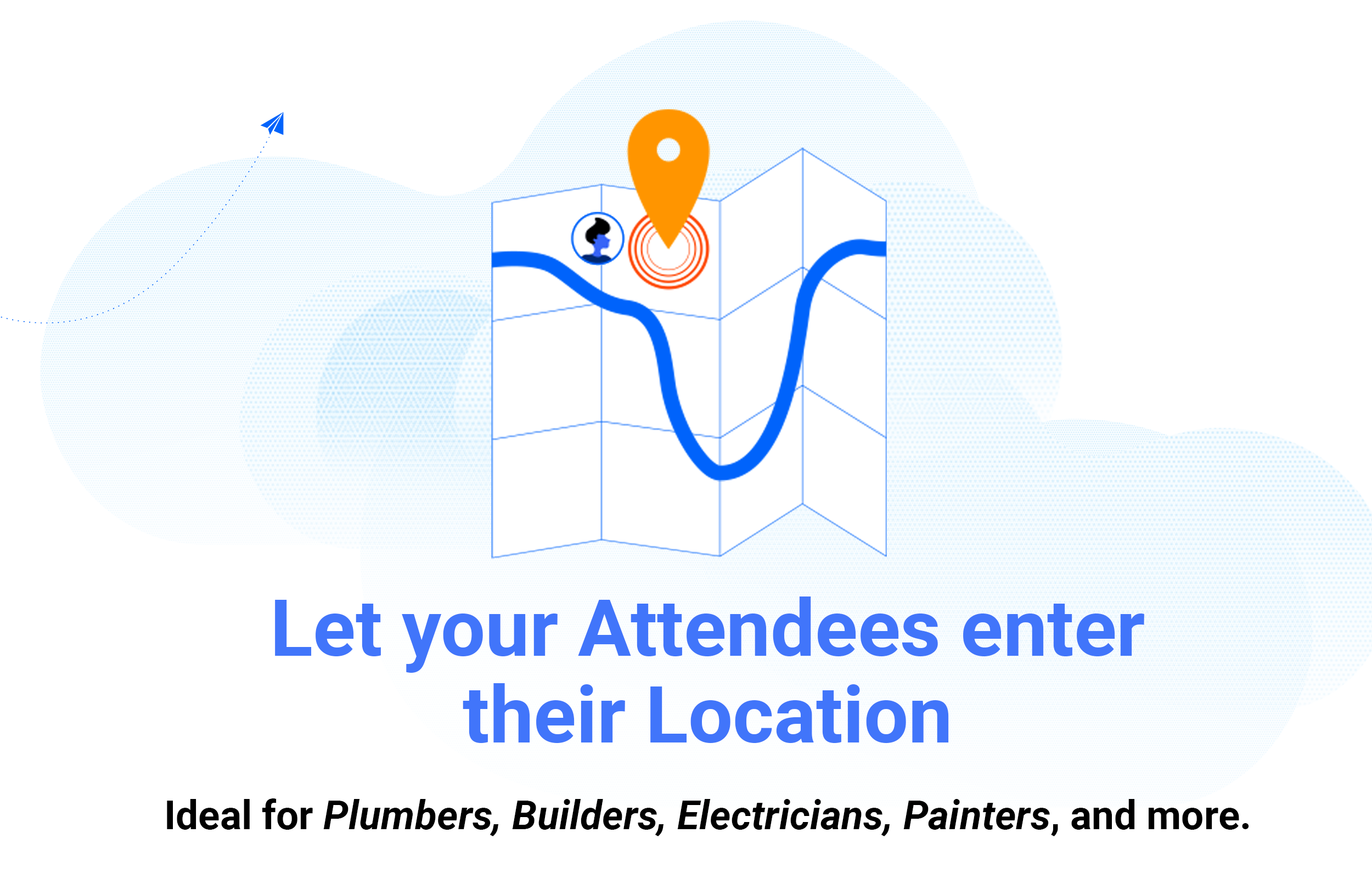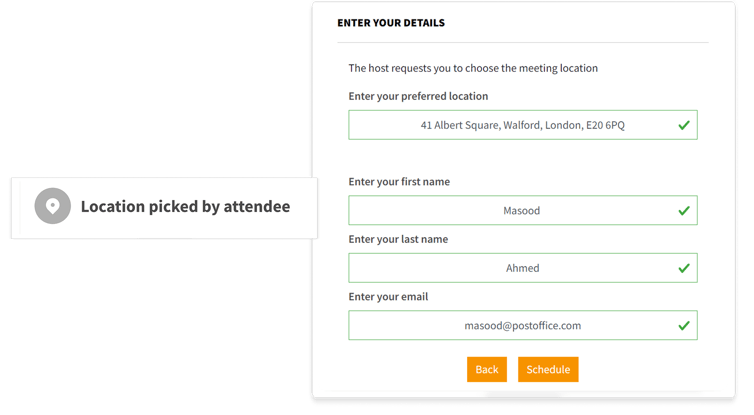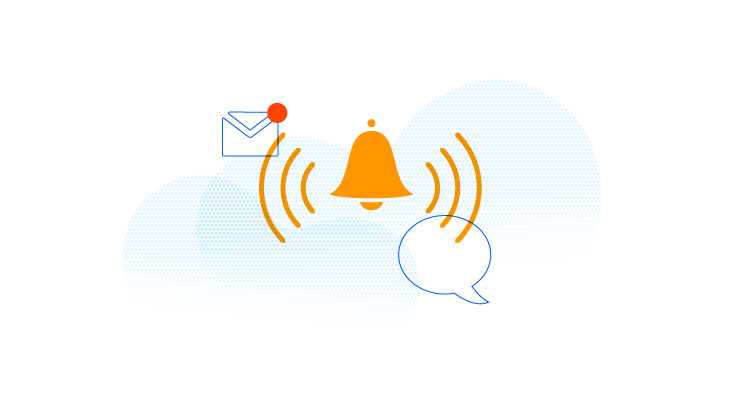
Attendees can input their Location for Bookings
It can be challenging to meet clients in person at their location, however, this is essential for some professionals (such as Builders, plumbers, and Electricians, just to name a few).
CatchApp has added functionality to make this possible with our Attendee Input Location Feature, which enables you to meet your customer where they are.
CatchApp Bookings is a genius scheduling tool that lets you fire and forgets your appointment worries. Customers click on your bookings link, and they're ready to choose a time and date from your availability, cutting down the stress, and ultimately, the time it takes to set the appointment itself, leaving you with up to one month of freed-up time each year. If you're liking the sound of that already, sign up here.

From your existing or new Event Types, when creating or editing them, you can select Attendee Location in the meeting location. When this is selected, this will ensure attendee who is making the booking to enter their location details which allows you to meet your client in person at their location.

All your attendee has to do is enter where they would like you to meet them and the details will be added to the appointment invitation. This means -
-
Time saved when scheduling available time with your clients
-
Capture customers' locations without the back & forth
-
Built-in Reminders for customers and you, increasing turn-up rates for appointments
If you provide a service that requires you to be at the location of your client, this feature is right for you!
Benefits
-
Great for Service Providers who need to meet their clients at their location (e.g. plumbers)
-
Allows the attendee to take the decision of where they want the Host to meet them for the meeting
-
Gives flexibility for Professionals to meet their clients physically outside the office
-
Face-to-face and Physical communication is seen as more trustworthy than email, according to a 2017 study published by the Journal of Experimental Social Psychology.
Learn more about it here


